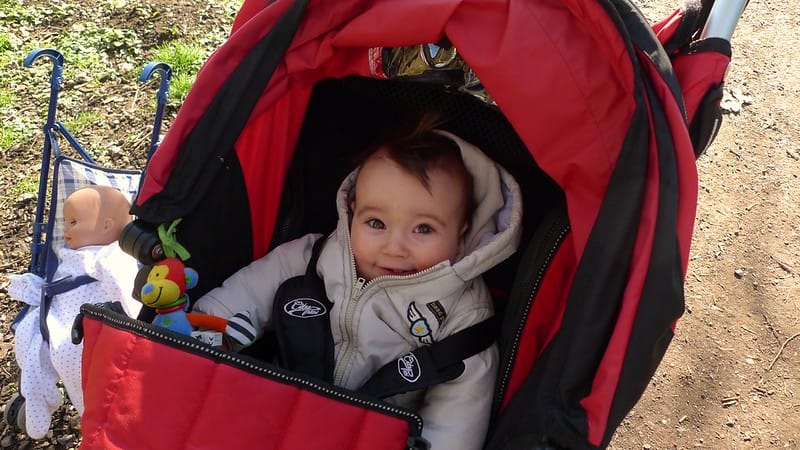Pushchair FAQ’s
Discover everything about Baby Pushchairs. Learn about safety, benefits, age-appropriateness, and more in our comprehensive FAQ guide.

Pushchair FAQ’s – Everything You Need to Know
If you’re expecting a little one or your baby is getting ready for outings, you’ve probably found yourself asking: Do I need a pushchair? When can I use one? What’s the safest option?
This FAQ page aims to provide you with all the information you need to make informed decisions about baby pushchairs. From safety considerations to product benefits, we’ve got you covered. Read on to discover everything you need to know about choosing and using pushchairs
Baby Pushchair Questions & Answers
Here are the most common pushchair questions answered in one place — so you can shop (and stroll) with confidence.
🍼 What age can my baby start using a pushchair?
Most pushchairs are suitable from around 6 months old, when your baby can sit up unaided and has good head control. This is because many pushchairs don’t fully recline and are not ideal for newborns.
However, some models come with newborn-friendly options, such as:
- Lie-flat seats
- Carrycot attachments
- Travel system compatibility (with car seats)
Always check the manufacturer’s age and weight guidelines.
🧷 Are pushchairs safe for babies?
Yes — pushchairs are safe when used correctly and when they meet UK safety standards (like BS EN 1888).
To ensure your baby’s safety:
- Always use the harness (preferably a 5-point harness).
- Check the brakes, especially when stopping on a slope.
- Lock the frame properly before placing your child inside.
- Avoid hanging heavy bags on the handles to prevent tipping.
Pro tip: Look for a JPMA or BSI certified pushchair — that means it’s passed key safety tests.
🎯 What are the benefits of a pushchair?
Pushchairs are lightweight, compact, and easy to manoeuvre, especially in towns or when travelling. Benefits include:
- Portability: Most fold flat or umbrella-style for easy car boot storage.
- Everyday use: Great for errands, school runs, and city walks.
- Affordability: Typically more budget-friendly than travel systems or prams.
- Versatility: Many models now offer reclining seats, footmuffs, rain covers, and even parent-facing modes.
🛒 How do I choose the right pushchair?
Here are a few things to consider:
- Your lifestyle: City? Suburbs? Public transport?
- Storage space: Some fold much smaller than others.
- Ease of folding: One-hand fold is great if you’re juggling baby + bags!
- Wheels: Larger wheels are better for uneven terrain.
- Weight limit: Make sure it supports your child as they grow.
If you travel often or live in a flat, a lightweight pushchair may be ideal. For longer walks, go for comfort features like padded seats and suspension.
🚗 What’s the difference between a pushchair, stroller, pram, and travel system?
Here’s a quick breakdown:
- Pushchair: Forward-facing seat, for babies 6 months+; lightweight and foldable.
- Stroller: Often used interchangeably with pushchair, though strollers are typically even more compact.
- Pram: Designed for newborns; lie-flat design for proper spine support.
- Travel System: A full set including a pushchair frame + detachable car seat + sometimes a carrycot.
Not sure what you need? Many parents start with a travel system or pram and switch to a pushchair later on.
🚼 Can I use a pushchair for a newborn?
Most standard pushchairs are not suitable for newborns unless they:
- Recline fully flat, or
- Allow a carrycot or infant car seat to be attached
Your newborn needs a lie-flat position for safe breathing and spine development. Always read the product label — many pushchairs say “suitable from birth” only when these features are included.
🚶 When should I switch from a pram to a pushchair?
You can typically switch to a pushchair around 6 months, or whenever your baby shows signs of:
- Sitting upright independently
- Holding their head steadily
- Wanting to look around during walks
Some babies are ready a little earlier — just ensure their pushchair supports proper posture and has enough recline and cushioning.
🌦️ Can I use a pushchair in bad weather?
Yes — many modern pushchairs come with weather accessories such as:
- Rain covers
- Sun canopies
- Footmuffs or bunting bags
If yours doesn’t include them, you can often buy compatible accessories. For winter, look for pushchairs with weatherproof fabric and good suspension.
🧼 How do I clean and maintain a pushchair?
Cleaning tips:
- Wipe the frame with a damp cloth
- Most seat covers are machine-washable – check the care label
- Clean wheels and check for any hair/debris regularly
- Dry it fully before folding and storing to avoid mildew
Regularly check the brakes, folding mechanism, and harness straps for wear and tear.
Still unsure which pushchair to buy?
Check out our latest:
- Best Pushchairs for 2025 – Reviewed & Ranked
- Pushchair Buying Guide for First-Time Parents
- Pushchair vs Travel System – What’s the Right Fit?
